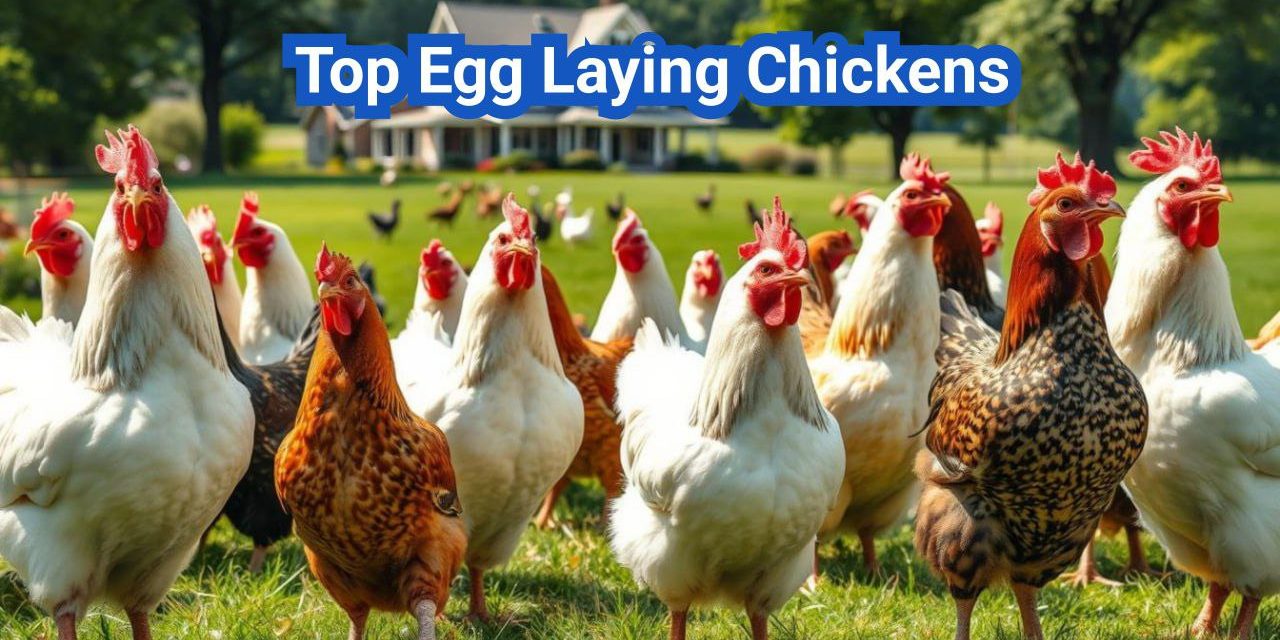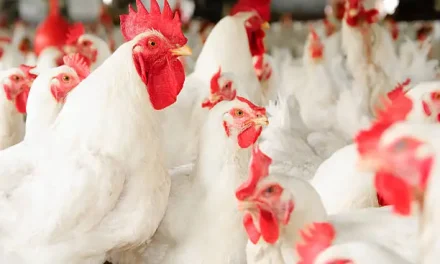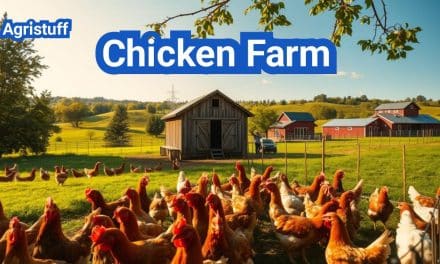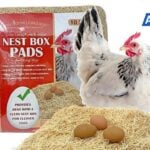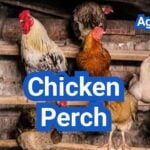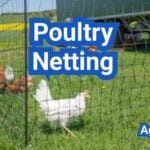For backyard enthusiasts and farmers alike, selecting the right top egg laying chickens is crucial for a successful egg production experience. With numerous breeds available, understanding the characteristics of the best egg laying chicken breeds can make all the difference.
In America, breeds such as Leghorns, Rhode Island Reds, and Australorps are renowned for their high egg production. These breeds not only offer a high yield but also bring unique characteristics to the table, making them ideal for various backyard setups.
Key Takeaways
- Understanding the importance of breed selection for egg production.
- Overview of top-performing egg laying chicken breeds in America.
- Characteristics of heritage and hybrid breeds.
- Factors influencing egg production in backyard chickens.
- Tips for choosing the right breed for your backyard.
Understanding Chicken Egg Production
Egg production in chickens is a multifaceted process that involves biology, nutrition, and management. Chickens have been bred over centuries for their egg-laying abilities, resulting in a wide range of breeds with varying production capacities.
How Egg Production Works in Chickens
Chickens begin laying eggs at around 18-24 weeks of age, depending on breed and nutrition. The egg production process involves the release of yolks from the ovaries, which then travel through the oviduct where they are surrounded by egg whites and shell membranes, and finally, the shell is formed. This process takes approximately 24-26 hours, which is why chickens typically don’t lay an egg every day.
Factors That Influence Egg Laying Capacity
Several factors influence a chicken’s egg-laying capacity, including nutrition, light exposure, and breed. Nutrition plays a critical role, as laying hens require a diet rich in calcium and protein to produce eggs. Light exposure also significantly affects egg production; hens need around 14 hours of light per day to maintain high production levels.
Other factors include the age of the hen, with younger hens laying more eggs than older ones, and environmental conditions such as temperature and stress levels. Managing these factors is crucial for maximizing egg production.
Production Breeds vs. Heritage Breeds
There are significant differences between production breeds and heritage breeds in terms of egg laying capacity. Production breeds, such as Leghorns, are bred specifically for their high egg production, often laying over 300 eggs per year. Heritage breeds, while sometimes less prolific, offer other benefits such as unique egg colors, better foraging abilities, and more robust health.
| Breed Type | Egg Production (eggs/year) | Egg Size/Color | Temperament |
|---|---|---|---|
| Production Breeds | 300+ | Large, white or brown | Can be flighty |
| Heritage Breeds | 200-280 | Varies, includes blue, green, and brown | Generally more docile |
Understanding these differences is key to choosing the right breed for your needs, whether you’re looking for maximum egg production or a more diverse and resilient flock.
Top Egg Laying Chickens for Maximum Production

For backyard chicken keepers and commercial producers alike, selecting the right breed is crucial for maximizing egg production. The top egg-laying chickens are bred specifically for their ability to produce a high volume of eggs, and several breeds stand out for their exceptional productivity.
Leghorns: The Commercial Egg-Laying Champions
Leghorns are renowned for their high egg production, laying between 280-300 large white eggs per year. Their ability to produce eggs consistently, coupled with their relatively small size and low feed requirements, makes them a favorite among commercial egg producers.
Golden Comets and Red Stars: Hybrid Productivity
Golden Comets and Red Stars are hybrid breeds known for their high egg production and friendly disposition. They lay around 200-220 brown eggs per year, making them excellent choices for backyard flocks where both egg production and temperament are valued.
ISA Browns and Black Stars: Consistent Producers
ISA Browns and Black Stars are prolific layers, producing around 300-320 brown eggs annually. Their consistent production and robust health make them popular among both commercial producers and backyard chicken keepers.
Rhode Island Reds: American Classics
Rhode Island Reds are a heritage breed that has been a staple in American backyard flocks for generations. They lay around 200-220 brown eggs per year and are valued for their hardiness, friendly nature, and rich egg production.
| Breed | Eggs Per Year | Egg Color | Temperament |
|---|---|---|---|
| Leghorns | 280-300 | White | Active, Friendly |
| Golden Comets | 200-220 | Brown | Friendly, Docile |
| ISA Browns | 300-320 | Brown | Calm, Robust |
| Rhode Island Reds | 200-220 | Brown | Friendly, Hardy |
Choosing the right breed is a critical decision for maximizing egg production. By understanding the characteristics and production capabilities of breeds like Leghorns, Golden Comets, ISA Browns, and Rhode Island Reds, chicken keepers can make informed decisions to meet their egg production needs.
Best Brown Egg Laying Chickens
Brown eggs are a favorite among many backyard chicken keepers, and certain breeds excel in laying them. If you’re looking to add some brown egg layers to your flock, consider the following breeds known for their productivity and egg quality.
Plymouth Rocks: The Friendly All-Rounders | Top Egg Laying Chickens
Plymouth Rocks are a popular choice for backyard flocks due to their friendly nature and consistent egg production. They lay around 280 large brown eggs per year and are known for their hardiness and foraging ability.
Wyandottes: Beautiful and Productive | Top Egg Laying Chickens
Wyandottes are not only stunning with their intricate feather patterns, but they’re also reliable brown egg layers, producing about 200 eggs annually. Their cold hardiness makes them an excellent choice for various climates.
Sussex: Reliable Heritage Layers | Top Egg Laying Chickens
The Sussex breed is another excellent choice for those seeking brown eggs. They are known for laying around 240-280 eggs per year. Sussex chickens are friendly, docile, and do well in free-range environments.
Marans: Dark Chocolate Egg Layers | Top Egg Laying Chickens
Marans chickens are prized for their dark, chocolate-brown eggs. While they lay fewer eggs than some other breeds (around 180-200 per year), the unique color and quality make them a favorite among many chicken enthusiasts.
When choosing brown egg-laying breeds, it’s essential to consider factors like climate hardiness, temperament, and egg production level to ensure they fit well with your existing flock and management practices.
- Plymouth Rocks: Friendly, hardy, and productive.
- Wyandottes: Beautiful, cold-hardy, and reliable layers.
- Sussex: Friendly, docile, and good foragers.
- Marans: Unique dark brown eggs, suitable for those seeking specialty eggs.
Blue and Green Egg Laying Breeds

Colorful eggs are not just a treat for the eyes, and certain breeds like Ameraucanas and Easter Eggers are known for laying blue and green eggs. These unique breeds offer backyard chicken keepers a chance to add some variety to their egg collection.
Ameraucanas: True Blue Egg Layers | Top Egg Laying Chickens
Ameraucanas are renowned for their ability to lay blue eggs, a trait that has made them a favorite among chicken enthusiasts. Their eggs are not just blue; they come in various shades, ranging from pale blue to a deeper, richer blue. Ameraucanas are also known for their friendly demeanor and relatively low maintenance care.
Easter Eggers: Colorful Variety | Top Egg Laying Chickens
Easter Eggers are another popular breed that lays a variety of egg colors, including blue and green. These chickens are often the result of crossing an Ameraucana or Araucana with another breed, which means their egg color can vary significantly, making every egg a surprise.
Olive Eggers: Green Egg Specialists | Top Egg Laying Chickens
Olive Eggers are a cross between a breed that lays dark brown eggs and one that lays blue eggs, resulting in their signature olive-green eggs. This breed combines the best of both worlds, offering not just unique eggs but also a robust and healthy chicken.
Cream Legbars: Sky Blue Eggs | Top Egg Laying Chickens
Cream Legbars are known for their striking appearance and their ability to lay sky blue eggs. This breed is not only a pleasure to look at, but it’s also known for its high egg production and friendly nature.
| Breed | Egg Color | Temperament | Egg Production |
|---|---|---|---|
| Ameraucanas | Blue | Friendly | Moderate |
| Easter Eggers | Varied (Blue, Green) | Variable | High |
| Olive Eggers | Olive Green | Robust | High |
| Cream Legbars | Sky Blue | Friendly | High |
Best Egg Laying Chickens for Beginners
The journey to becoming a successful backyard chicken keeper begins with selecting the right egg-laying chickens, especially for those just starting out. Beginner-friendly breeds are typically characterized by their hardiness, ease of handling, and consistent egg production.
Buff Orpingtons: Gentle Giants | Top Egg Laying Chickens
Buff Orpingtons are a popular choice among beginners due to their gentle nature and high egg production. They are known for being friendly, docile, and relatively low maintenance. Buff Orpingtons lay large, brown eggs and are a great addition to any backyard flock.
Australorps: Record-Breaking Layers | Top Egg Laying Chickens
Australorps are renowned for their egg-laying abilities, with some individuals producing over 300 eggs per year. They are quiet, easy to handle, and come in a variety of colors. Their high production rate and gentle disposition make them an excellent choice for beginners.
New Hampshire Reds: Hardiness and Production | Top Egg Laying Chickens
New Hampshire Reds are known for their hardiness and are well-suited for cold climates. They are prolific layers, producing large, brown eggs, and are also known for their friendly and docile nature. This breed is ideal for beginners looking for a robust and productive layer.
Speckled Sussex: Friendly and Productive | Top Egg Laying Chickens
The Speckled Sussex is another breed that is highly recommended for beginners. They are known for their friendly and outgoing personalities, making them a joy to be around. Speckled Sussex hens are good layers, producing light brown eggs, and are also prized for their beauty and foraging abilities.
When choosing the best egg-laying chickens for your backyard, consider breeds that are not only productive but also fit well with your lifestyle and climate. The breeds mentioned above are excellent starting points for beginners, offering a mix of hardiness, productivity, and friendly temperaments.
- Consider the climate and region when selecting breeds.
- Look for breeds known for their hardiness and low maintenance.
- Choose breeds that are friendly and easy to handle.
- Research the average egg production of the breed.
Cold Hardy Chicken Breeds That Lay Well

For backyard chicken keepers in colder climates, selecting breeds that can withstand low temperatures while maintaining egg production is crucial. Cold hardy chicken breeds are designed to thrive in harsh winter conditions, making them ideal for farmers and hobbyists alike.
Several breeds stand out for their ability to withstand cold weather and continue laying eggs. Let’s explore some of these resilient breeds.
Wyandottes: Beautiful Cold Weather Performers | Top Egg Laying Chickens
Wyandottes are known for their stunning appearance and cold hardiness. Originating in the United States, they have been bred to withstand harsh winters. Their dense feathering helps keep them warm, and they continue to lay eggs consistently throughout the year.
Brahmas: Winter Laying Giants | Top Egg Laying Chickens
The Brahma breed is another cold hardy chicken that performs well in winter conditions. These large, gentle birds are not only impressive in size but also in their ability to lay eggs during the colder months.
Dominiques: America’s Oldest Breed | Top Egg Laying Chickens
Dominiques are recognized as one of America’s oldest chicken breeds. They are well-adapted to various climates, including cold weather, and are known for their consistent egg laying.
Chanteclers: Canadian Cold Specialists | Top Egg Laying Chickens
The Chantecler breed, developed in Canada, is specifically designed to thrive in cold climates. Their cold hardiness, combined with their egg-laying abilities, makes them an excellent choice for backyard flocks in colder regions.
By choosing breeds like Wyandottes, Brahmas, Dominiques, and Chanteclers, chicken keepers can ensure a steady supply of eggs even during the harshest winter months.
Dual-Purpose Chickens for Eggs and Meat

When it comes to maximizing your backyard chicken flock’s potential, dual-purpose breeds are an excellent choice. These versatile chickens can provide both a steady supply of eggs and a source of meat, making them ideal for homesteaders and backyard chicken keepers.
Jersey Giants: The Gentle Giants | Top Egg Laying Chickens
Jersey Giants are a popular dual-purpose breed known for their large size and gentle nature. They are excellent for meat production due to their size, with roosters weighing up to 13 pounds. While they are not the most prolific egg layers, they produce a respectable number of large brown eggs.
Orpingtons: Multipurpose Excellence | Top Egg Laying Chickens
Orpingtons are another versatile breed that excels in both egg and meat production. They are known for their friendly disposition and are good foragers, making them suitable for free-range systems. Orpingtons lay a significant number of brown eggs and have a meaty carcass.
Delawares: American Heritage Dual-Purpose Birds | Top Egg Laying Chickens
Delawares are a heritage breed that has been used for both eggs and meat for many years. They are known for their fast growth rate and are praised for their friendly and docile nature. Delawares lay a good number of eggs and are suitable for meat production.
Buckeyes: Cold-Hardy Meat and Egg Producers | Top Egg Laying Chickens
Buckeyes are a hardy breed known for their cold hardiness and ability to produce both eggs and meat. They are good foragers and are recognized for their rich, dark egg production and meaty carcasses. Buckeyes are an excellent choice for those in colder climates.
| Breed | Egg Production | Meat Production | Temperament |
|---|---|---|---|
| Jersey Giants | Moderate | Excellent | Gentle |
| Orpingtons | Good | Good | Friendly |
| Delawares | Good | Excellent | Docile |
| Buckeyes | Good | Good | Active |
Choosing the right dual-purpose chicken breed depends on your specific needs, climate, and available space. By considering these factors and understanding the characteristics of each breed, you can make an informed decision that suits your backyard chicken keeping goals.
Optimizing Your Flock for Egg Production

A well-managed flock is key to achieving consistent and high egg production levels. Optimizing your flock involves understanding the critical factors that influence egg laying, from flock composition to tracking production.
Ideal Flock Composition for Consistent Eggs | Top Egg Laying Chickens
The composition of your flock significantly affects egg production. A balanced flock should include a mix of hens at different stages of their laying cycle. This balance ensures consistent egg production throughout the year.
- Diverse Age Groups: Having hens of different ages helps maintain steady egg production.
- Breed Selection: Choosing breeds known for their egg-laying capabilities is crucial.
- Healthy Environment: Ensuring a stress-free and healthy environment for your hens.
Managing Age Distribution in Your Flock
Managing the age distribution of your flock is vital for maintaining optimal egg production. Hens typically begin laying eggs at around 18-24 weeks of age, and their production peaks in the first year.
Pullets, or young hens, should be introduced to the flock in a way that maintains a balanced age distribution. This strategy helps in sustaining egg production over time.
When to Introduce New Layers | Top Egg Laying Chickens
Introducing new layers to your flock at the right time is crucial. It’s generally recommended to introduce pullets when the older hens are around 72 weeks old, ensuring a continuous supply of eggs.
- Monitor the production levels of your current flock.
- Plan the introduction of new pullets 6-8 months before the older hens reach the end of their productive cycle.
- Ensure the new pullets are healthy and well-adapted to the flock’s environment.
Tracking Egg Production | Top Egg Laying Chickens
Tracking egg production is essential for understanding the performance of your flock. Keeping a record helps identify any issues early on, allowing for timely interventions.
Use a simple yet effective method to track egg production, such as a daily log or a spreadsheet. This practice will help you make informed decisions about your flock management.
Nutrition for Maximum Egg Production

The key to optimal egg production lies in providing your chickens with the right balance of nutrients.
Essential Nutrients for Laying Hens
Laying hens require a diet rich in protein, calcium, and other essential nutrients to maintain high egg production. Protein is crucial for the overall health of the hens and the quality of the eggs.
Calcium is another critical nutrient, necessary for the production of strong eggshells. A deficiency in calcium can lead to soft or cracked eggs.
Commercial Feed vs. Homemade Options | Top Egg Laying Chickens
Commercial layer feed is formulated to meet the nutritional needs of laying hens and is a convenient option. However, some poultry keepers prefer to create their own homemade feed using a mix of grains, proteins, and supplements.
When choosing between commercial and homemade feed, consider factors such as cost, nutritional balance, and the time required to manage your flock’s diet.
| Nutrient | Commercial Feed | Homemade Feed |
|---|---|---|
| Protein | 16-18% | Variable, depends on ingredients |
| Calcium | 3.5-4% | Can be adjusted with supplements |
| Energy | 2800-3000 kcal/kg | Depends on grain mix |
Supplements and Treats for Healthy Eggs
In addition to their regular feed, laying hens can benefit from certain supplements and treats. Oyster shells are a popular supplement, providing a calcium boost to support strong eggshell production.
Treats such as fruits and vegetables can add variety to your hens’ diet and provide additional nutrients.
Seasonal Feeding Adjustments | Top Egg Laying Chickens
The nutritional needs of laying hens can vary with the seasons. During colder months, hens may require more energy to stay warm, while in hotter months, they may need more hydration and possibly less energy-dense feed.
Adjusting your feeding strategy according to the season can help maintain optimal egg production throughout the year.
Housing and Environment for Productive Layers

The right housing conditions and environment play a pivotal role in the productivity and health of your egg-laying hens. A well-designed coop not only protects your flock from predators and harsh weather but also contributes significantly to their overall well-being and egg production capacity.
Coop Design for Optimal Egg Laying
A coop that is well-ventilated, dry, and free from drafts is essential for maintaining the health of your chickens. The design should allow for easy cleaning and provide enough space for your hens to move comfortably. A general rule of thumb is to provide at least 3-4 square feet of space per chicken inside the coop. Proper coop design can significantly reduce stress among your flock, thereby enhancing egg production.
Nesting Box Requirements | Top Egg Laying Chickens
Nesting boxes are a critical component of your coop, providing a safe and comfortable place for your hens to lay their eggs. It’s recommended to have one nesting box per 3-4 hens. The boxes should be well-bedded with materials like straw or pine shavings and placed in a quiet, dark area of the coop to encourage laying. Proper nesting boxes can help reduce stress and prevent behaviors like egg eating.
Lighting for Extended Production | Top Egg Laying Chickens
Lighting is another crucial factor in egg production. Hens require a certain amount of daylight to maintain optimal laying. In periods of shorter daylight, supplementing with artificial lighting can help extend egg production. However, it’s essential to introduce lighting gradually to avoid stressing the birds. Aiming for a total of 14-16 hours of light per day can help maintain consistent egg laying.
Managing Stress in Your Flock | Top Egg Laying Chickens
Managing stress is vital for maintaining a productive flock. Overcrowding, predator threats, and changes in the environment can all cause stress. Ensuring your coop is secure, providing enough space, and minimizing changes can help reduce stress. Additionally, providing enrichment activities and ensuring access to fresh water and nutritious feed are crucial for the overall well-being of your hens.
By focusing on these aspects of housing and environment, you can create a conducive setting for your hens to thrive and produce eggs consistently.
Common Egg Production Problems and Solutions

Common issues can significantly impact egg production, but there are effective solutions available. Understanding these challenges is crucial for maintaining a healthy and productive flock.
Dealing with Egg Binding | Top Egg Laying Chickens
Egg binding is a serious condition where a hen is unable to lay an egg. This can be caused by nutritional deficiencies, stress, or obesity. To address egg binding, ensure your hens receive a balanced diet rich in calcium and vitamin D. Providing a stress-free environment and maintaining a healthy weight through proper feeding and exercise can also help.
Addressing Soft or Misshapen Eggs | Top Egg Laying Chickens
Soft or misshapen eggs can be a result of calcium deficiency or stress. Ensuring that your hens have access to adequate calcium through crushed oyster shells or dark leafy greens can help strengthen eggshells. Reducing stress by providing enough space and a calm environment is also crucial.
Preventing Egg Eating Behavior | Top Egg Laying Chickens
Egg eating behavior can become a habit if not addressed promptly. This behavior can be triggered by nutritional deficiencies or the accidental breaking of eggs in the nesting box. To prevent this, ensure that your hens are getting enough protein and calcium. Using nesting boxes with egg collection systems can also help reduce the incidence of egg eating.
Managing Seasonal Production Drops | Top Egg Laying Chickens
Seasonal changes, particularly during winter, can lead to a drop in egg production due to shorter daylight hours and colder temperatures. To manage this, consider providing supplemental lighting in the coop to maintain around 14 hours of light per day. Ensuring your hens are comfortable and warm can also help maintain production levels.
| Issue | Cause | Solution |
|---|---|---|
| Egg Binding | Nutritional deficiencies, stress, obesity | Balanced diet, stress-free environment, healthy weight |
| Soft or Misshapen Eggs | Calcium deficiency, stress | Adequate calcium, reduced stress |
| Egg Eating Behavior | Nutritional deficiencies, broken eggs | Adequate protein and calcium, nesting box management |
| Seasonal Production Drops | Shorter daylight, colder temperatures | Supplemental lighting, warm and comfortable environment |
Comparing the Top 20 Egg Laying Chicken Breeds

For those looking to start or enhance their backyard flock, comparing top egg-laying breeds is a vital step. The top 20 egg-laying chicken breeds offer a range of characteristics that can suit different needs and preferences.
Production Quantity Comparison | Top Egg Laying Chickens
When it comes to egg production, breeds like Leghorns and ISA Browns are among the highest producers, laying over 300 eggs per year. Other notable breeds include Golden Comets and Rhode Island Reds, which offer a balance between production quantity and other desirable traits.
Egg Size and Color Comparison | Top Egg Laying Chickens
Egg size and color vary significantly across breeds. For instance, Marans are known for their dark chocolate-brown eggs, while Ameraucanas lay blue eggs. Leghorns and ISA Browns typically lay large white or brown eggs.
Temperament and Handling Comparison | Top Egg Laying Chickens
Temperament is a crucial factor, especially for backyard flocks. Breeds like Buff Orpingtons and Speckled Sussex are known for their friendly and docile nature, making them excellent choices for families. In contrast, some breeds may be more skittish or require more handling experience.
Space and Care Requirements Comparison | Top Egg Laying Chickens
Different breeds have varying needs when it comes to space and care. Larger breeds like Jersey Giants require more space, while smaller breeds like Leghorns can thrive in relatively smaller areas. Understanding these requirements is essential for providing the right environment for your flock.
By comparing these aspects of the top 20 egg-laying chicken breeds, you can make an informed decision that suits your specific needs, whether you’re a seasoned poultry keeper or just starting out.
Choosing the Right Egg Layers for Your Needs
Choosing the right egg laying chickens for your backyard flock can be a daunting task, but with the right information, you can make an informed decision. When selecting a breed, consider factors like climate, space, and desired egg production. Popular egg laying chicken breeds like Leghorns, Golden Comets, and ISA Browns are known for their high production, while breeds like Plymouth Rocks and Wyandottes offer a balance between eggs and meat.
The best egg laying chickens for your needs will depend on your specific requirements. If you’re looking for high production, consider commercial breeds. For a more diverse flock, heritage breeds like Marans and Ameraucanas can add variety to your egg basket. By understanding the characteristics of different breeds and managing your flock effectively, you can enjoy a consistent supply of fresh eggs.
Ultimately, choosing egg laying chickens that fit your lifestyle and needs will ensure a rewarding backyard flock experience. Whether you’re a seasoned poultry keeper or just starting out, selecting the right breed is crucial for a successful and enjoyable experience.
FAQ
What are the best chicken breeds for egg production?
The best chicken breeds for egg production include Leghorns, Golden Comets, Rhode Island Reds, and ISA Browns, known for their high egg-laying capacity.
What factors influence egg laying capacity in chickens?
Factors that influence egg laying capacity include breed, nutrition, age, light exposure, and stress levels.
What is the difference between production breeds and heritage breeds?
Production breeds are optimized for high egg production, while heritage breeds are valued for their historical significance, unique characteristics, and often, their dual-purpose use for both eggs and meat.
Which chicken breeds lay brown eggs?
Breeds like Plymouth Rocks, Wyandottes, Marans, and Sussex are known for laying brown eggs, with Marans laying dark chocolate-colored eggs.
Which chicken breeds lay blue or green eggs?
Ameraucanas lay true blue eggs, while Easter Eggers and Olive Eggers can lay a variety of colors including blue, green, and pink.
What are the best egg-laying chicken breeds for beginners?
Buff Orpingtons, Australorps, New Hampshire Reds, and Speckled Sussex are recommended for beginners due to their friendly nature and reliable egg production.
Which chicken breeds are cold-hardy and continue to lay eggs in cold weather?
Wyandottes, Brahmas, Dominiques, and Chanteclers are cold-hardy breeds that continue to lay eggs well in cold climates.
What are dual-purpose chicken breeds?
Dual-purpose breeds, such as Jersey Giants, Orpingtons, Delawares, and Buckeyes, are suitable for both egg production and meat.
How can I optimize my flock for egg production?
Optimizing your flock involves managing flock composition, age distribution, introducing new layers at the right time, and tracking egg production.
What are the nutritional requirements for laying hens?
Laying hens require a diet rich in calcium, protein, and other essential nutrients. Commercial feed or a well-balanced homemade diet can meet these needs.
How does coop design and environment affect egg production?
A well-designed coop with adequate nesting boxes, proper lighting, and a stress-free environment is crucial for maintaining high egg production.
What are common egg production problems and their solutions?
Common issues include egg binding, soft or misshapen eggs, and egg eating behavior. Solutions involve proper nutrition, stress management, and sometimes, veterinary care.
Do I need a rooster for my chickens to lay eggs?
No, hens will lay eggs without a rooster. A rooster is necessary for fertilized eggs but not for egg production itself.
How long do chickens lay eggs?
Chickens typically begin laying eggs at around 18-24 weeks of age and continue for about a year, with production decreasing over time.
What helps chickens lay eggs?
Adequate nutrition, proper lighting, a stress-free environment, and good health are key factors that support egg laying in chickens.
Conclusion of: The Top Egg Laying Chickens in America
Discover the essential information on Top Egg Laying Chickens to help you select the best hens for backyard or small‑scale production flocks. This comprehensive, SEO‐friendly USA‑focused guide describes the most productive, reliable and USDA‑adapted layer breeds in America, how to manage them, and what makes them ideal for high egg output, nutrient efficiency and consistent performance.
Introduction: Why the Top Egg Laying Chickens Matter to Your Flock
Understanding the value of Top Egg Laying Chickens can dramatically affect your annual yield: a robust layer breed delivers more than 300 eggs a year under ideal care, whereas a mediocre choice may produce only 150–200. In this guide, we explore the most efficient breeds suited to U.S. climates, backyard systems, or cottage-scale runs, focusing on genetic potential, feed conversion, and adaptability. Selecting the Top Egg Laying Chickens sets the stage for a steady egg supply, healthy flocks, and compliance with cage-free or humane practice trends in many U.S. states.
For more on USDA poultry guidelines, visit the USDA Poultry Standards.
Why Choosing Among the Top Egg Laying Chickens Is Essential
For Americans interested in sustainable, cage-free, or backyard egg production, the Top Egg Laying Chickens represent a balance between high yield and ease of care. Breeds like the ISA Brown or White Leghorn have been optimized for feed efficiency and consistent output—crucial in a market with rising egg prices. By focusing on the Top Egg Laying Chickens, you maximize egg totals, minimize feed cost per dozen, reduce mortality risk, and remain compliant with new U.S. housing regulations.
Learn about biosecurity for backyard flocks from the CDC’s Avian Flu Guidelines.
ISA Brown: A Premier Top Egg Laying Chicken
The ISA Brown is widely acknowledged as one of the most productive Top Egg Laying Chickens in America, delivering around 300–350 large brown eggs per year per hen when well managed. In many commercial operations, hen-housed averages exceed 321 eggs per bird with a 97% livability rate. ISA Browns start laying at about 20 weeks, mature into calm, friendly birds, and adapt well to U.S. backyard or free-range systems. When managed according to USDA cage-free standards, these hens perform reliably with low mortality and superior feed conversion.
For breed-specific care tips, see the Poultry Extension at Purdue University.
White Leghorn: Industrial Benchmark Among Top Egg Laying Chickens
White Leghorns set the industry standard for the Top Egg Laying Chickens category: elite strains average 280–320 white eggs per year under optimal conditions. Though flighty, they are agile and benefit from free-range yards; their exceptional feed-to-egg conversion may be as low as 1.19 kg feed per dozen eggs (~125 g daily). These traits make them ideal for commercial or hobbyists in the USA seeking consistent, economical layers without broody interruptions.
Explore egg production science at the American Poultry Association.
Rhode Island Red: Dual-Purpose and Reliable Among Top Egg Laying Chickens
Rhode Island Reds are often ranked among the Top Egg Laying Chickens due to their adaptability and dual-purpose pedigree. A standard modern RIR can produce 200–300 brown eggs per year—typically 4–6 eggs weekly at peak production. Developed in Rhode Island and Massachusetts, they handle both heat and cold with resilience. While their feed conversion isn’t as elite as ISA Browns or Leghorns, their hardiness, docile nature, and dependable productivity make them excellent for backyard or semi-commercial U.S. setups.
For cold-hardy breed advice, check the Livestock Conservancy’s Guide.
Barred Plymouth Rock: Dependable Top Egg Laying Chickens for All Seasons
Barred Plymouth Rocks (often called “Plymouth Rock”) rank high among Top Egg Laying Chickens, especially for homesteaders in varying U.S. climates. They yield 200–280 large brown eggs per year, with excellent cold-hardiness and calm temperament. These hens typically begin laying at 5–6 months and continue during winter if well-lighted. Their low broody tendency and easy foraging make them ideal for small farms in both northern and southern regions of the USA.
Learn about winter care from the University of Minnesota Extension.
Ameraucana / Easter Egger: Unique Blue-Egg Variant Among Top Egg Laying Chickens
Ameraucana hens—often marketed as blue or Easter Egg layers—may not match ISA Browns or Leghorns in maximum annual yield, but they still qualify as Top Egg Laying Chickens for their unique appeal. They lay 150–250 blue-green eggs per year—about 4–5 weekly during peak season—with late maturity (6–7 months). Their medium size and fair feed efficiency make them a solid choice for backyard producers wanting eye-catching shell color and decent output.
For colorful egg genetics, visit Michigan State University Poultry Science.
Feeding, Lighting, and Environment Management for Top Egg Laying Chickens
Optimal management is essential to fulfill the genetic promise of Top Egg Laying Chickens. A layer diet with 16–18% protein, calcium from oyster shell, and 12–16 hours of daily lighting sustains peak production. For example, White Leghorns achieve 94% hen-day production with controlled lighting and tight feed conversion. ISA Browns show 93%+ livability when fed well and given proper infrastructure. Consistent routines, clean water, and adequate space ensure maximum annual output.
For nutrition guidelines, see USDA’s Poultry Feed Recommendations.
Climate Resilience and Adaptability in Top Egg Laying Chickens
Different Top Egg Laying Chickens offer varying climate tolerance. Rhode Island Reds and Plymouth Rocks excel in cold northern U.S. winters. ISA Browns adapt well in warmer southern zones. White Leghorns prefer sheltered settings with strong ventilation in heat. Ameraucanas are moderately cold-tolerant but benefit from supplemental heat in severe winters. Matching climate with breed maintains consistent egg output year-round.
For regional breed suitability, consult Penn State Extension’s Poultry Resources.
Comparing Top Egg Laying Chickens: Breed Highlights at a Glance
| Breed | Eggs/Year | Egg Color | Feed Efficiency | Best U.S. Settings | Traits |
|---|---|---|---|---|---|
| ISA Brown | 300–350 | Brown | Very High | Backyard, free-range | Friendly, high yield |
| White Leghorn | 280–320 | White | Industry-best | Commercial, small farm | Flighty, non-broody |
| Rhode Island Red | 200–300 | Brown | Moderate | Backyard, homestead | Hardy, dual-purpose |
| Plymouth Rock | 200–280 | Brown | Good | All-season free-range | Docile, winter-hardy |
| Ameraucana | 150–250 | Blue-green | Fair | Backyard, ornamental | Unique color, slower start |
For a detailed breed comparison, visit The Livestock Conservancy.
Final Thoughts: Why These Are the USA’s Top Egg Laying Chickens
In summary, the Top Egg Laying Chickens in America include ISA Browns, White Leghorns, Rhode Island Reds, Barred Plymouth Rocks and Ameraucanas. Each breed offers a unique combination of productivity, shell color, temperament and adaptability. With attentive management—balanced feed, proper lighting, clean housing and climate‑appropriate shelter—these Top Egg Laying Chickens can deliver reliable eggs year after year. Whether for small homesteads, backyard setups or environmentally conscious cage‑free models, these breeds headline the list for American egg producers.
For further reading on sustainable poultry, explore Sustainable Agriculture Research & Education (SARE).

